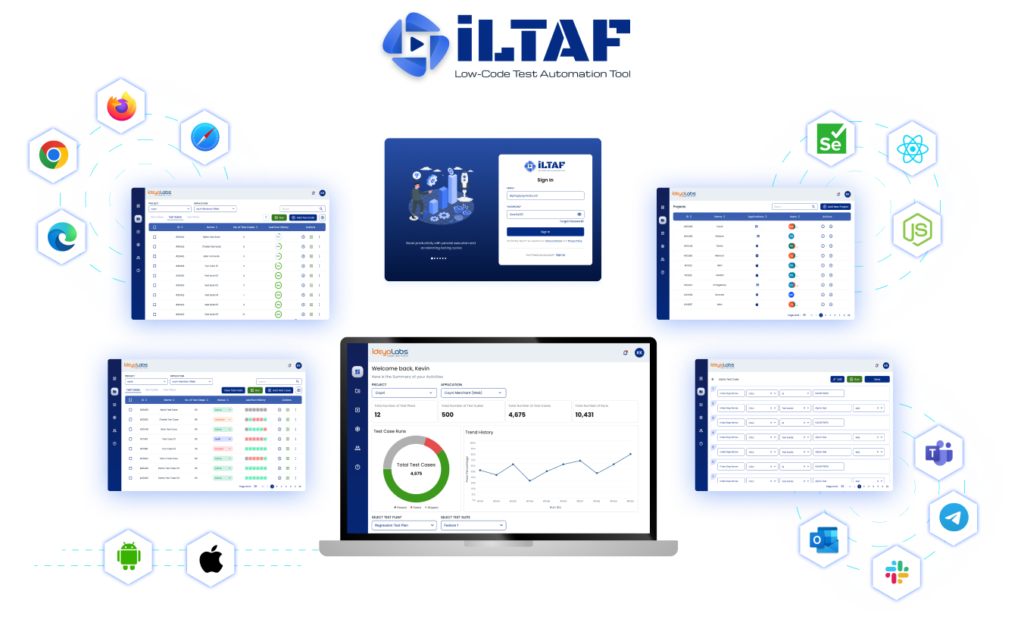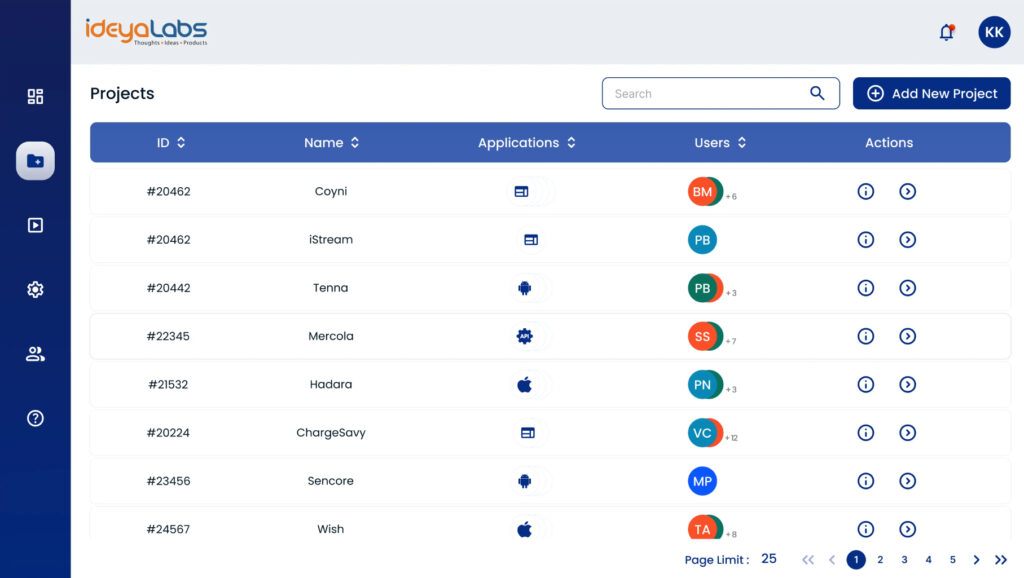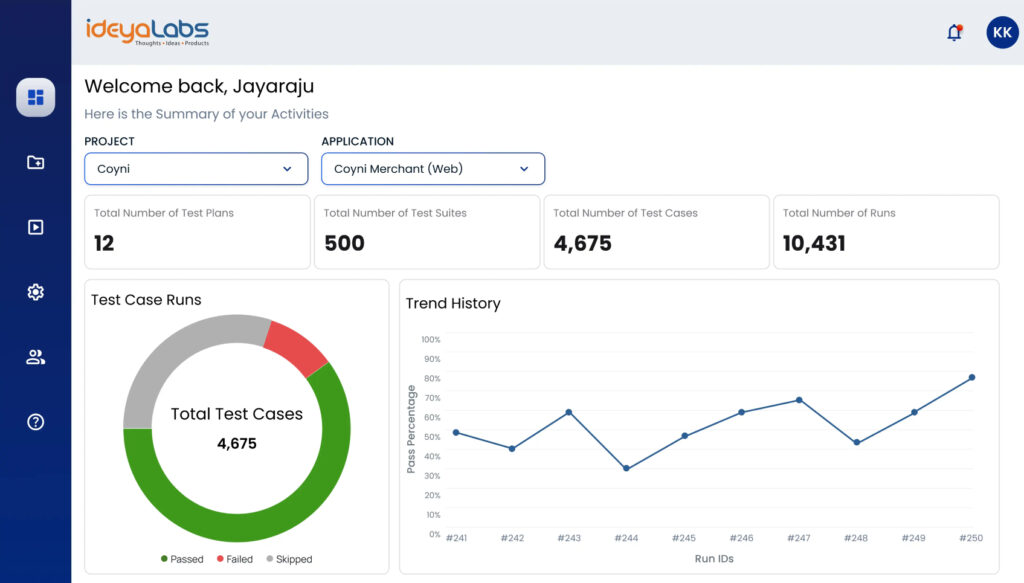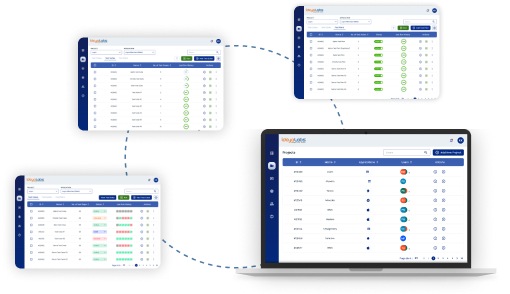
In the ever-evolving landscape of software development, the demand for efficient, reliable, and scalable testing solutions has reached unprecedented levels. As organizations accelerate their digital transformation initiatives, the need for sophisticated yet accessible test automation tools have become paramount. Enter iTAF, the groundbreaking low-code test automation framework developed by ideyaLabs, set to redefine the paradigms of quality assurance and software testing.

The Genesis of iTAF
ideyaLabs, a vanguard in empowering clients to revolutionize their business models, experiences, and operations through cutting-edge digital technologies, proudly presents iTAF as the culmination of years of expertise and innovation in the realm of software testing. This state-of-the-art solution is meticulously crafted to address the multifaceted challenges faced by modern development teams, offering a comprehensive suite of features designed to streamline workflows, enhance collaboration, and dramatically reduce time-to-market.
Technical Deep Dive: iTAF’s Core Features
Low-Code Interface: Democratizing Test Automation
At the heart of iTAF lies its revolutionary low-code interface. This feature serves as a testament to ideyaLabs’ commitment to democratizing test automation, enabling professionals across the spectrum of technical proficiency to contribute meaningfully to the quality assurance process. The platform’s intuitive drag-and-drop mechanism allows even those with limited coding experience to swiftly construct robust automated tests. From a technical standpoint, the low-code interface leverages a sophisticated visual programming paradigm. It translates user actions into reusable, modular code components, which can be easily assembled into complex test scenarios. This abstraction layer significantly reduces the cognitive load on testers, allowing them to focus on test logic rather than syntax intricacies.

Unified Web and Mobile Automation: A Holistic Approach
In an era where applications must seamlessly traverse a myriad of platforms and devices, iTAF stands out as a unified solution for both web and mobile automation. This holistic approach eliminates the need for disparate tools and frameworks, offering a cohesive environment for testing across iOS, Android, and web platforms. Technically, iTAF achieves this through a sophisticated abstraction layer that normalizes interactions across different platforms. It employs platform-specific drivers and adapters that translate generic test commands into platform-specific actions. This architecture ensures that a single test script can be executed across multiple platforms with minimal modifications, significantly reducing maintenance overhead and ensuring consistency in test coverage.
Multi-Language Support: Embracing Polyglot Development
Recognizing the diverse skill sets within modern development teams, iTAF accommodates automation scripting in Java, C#, and Python. This polyglot capability fosters an environment of inclusivity and flexibility, allowing organizations to leverage existing expertise while providing pathways for skill development and cross-functional collaboration. From an implementation perspective, iTAF utilizes a language-agnostic core engine that interfaces with language-specific bindings. This architecture allows for seamless integration of scripts written in different languages within the same test suite. The framework employs advanced parsing and compilation techniques to translate these scripts into a unified internal representation, ensuring consistent execution regardless of the source language.
Advanced Testing Capabilities
Data-Driven Testing: Elevating Test Reusability
iTAF’s data-driven testing capabilities represent a significant leap forward in test automation efficiency. The framework’s ability to extract test data from external sources such as Excel, CSV, or JSON files introduces a level of flexibility and reusability that is unprecedented in many traditional testing environments. Technically, this feature is implemented through a robust data abstraction layer that decouples test logic from test data. iTAF employs advanced data parsing algorithms to dynamically load and interpret data from various sources. This parsed data is then injected into test scripts at runtime, allowing for the execution of the same test logic across multiple data sets without script modification.
Cross-Browser Testing: Ensuring Universal Compatibility
In the realm of browser compatibility, iTAF emerges as a paragon of thoroughness. The platform’s robust cross-browser testing capabilities ensure flawless performance across major web browsers, including Chrome, Firefox, Safari, and Edge. To achieve this, iTAF utilizes a sophisticated browser orchestration engine. This engine manages a pool of browser instances, potentially leveraging containerization technologies for isolation and scalability. It employs browser-specific WebDriver implementations and custom extensions to normalize browser behavior, ensuring consistent test execution across different browser environments.
Integration and Analytics
Seamless Tool Integration: Creating a Cohesive Ecosystem
iTAF’s design philosophy places a strong emphasis on integration. The platform seamlessly integrates with leading test management tools such as TestRail and Zephyr, as well as defect management systems like Jira and Bugzilla, creating a cohesive ecosystem that streamlines the entire testing lifecycle. From a technical perspective, this integration is achieved through a robust API layer that supports bidirectional data flow between iTAF and external tools. The framework employs standardized protocols like REST and GraphQL for data exchange, with built-in adapters that handle authentication, data mapping, and synchronization tasks.

Comprehensive Reporting and Analytics: Data-Driven Insights
The analytical capabilities of iTAF are equally impressive, with the platform generating comprehensive reports replete with insightful analytics. These detailed reports serve as a foundation for data-driven decision-making, enabling teams to assess test quality, track progress, and drive continuous improvement initiatives. Technically, iTAF’s reporting engine leverages advanced data aggregation and visualization techniques. It collects granular execution data, including performance metrics, coverage statistics, and failure patterns. This data is then processed through sophisticated analytics algorithms to generate actionable insights, presented through interactive dashboards and customizable report templates.
Scalability and Performance
Cloud-Native Architecture: Enabling Elastic Scalability
iTAF’s architecture is designed with scalability at its core. The platform leverages cloud-native technologies to provide elastic scalability, allowing organizations to dynamically adjust their testing infrastructure based on demand. From a technical standpoint, iTAF employs a microservices-based architecture, with each component of the testing pipeline encapsulated as a scalable service. These services are orchestrated using container technologies like Kubernetes, enabling seamless horizontal scaling. The framework also incorporates advanced load balancing and resource allocation algorithms to optimize resource utilization during large-scale test executions.
Parallel Execution: Maximizing Testing Efficiency
To address the growing complexity of modern applications, iTAF incorporates sophisticated parallel execution capabilities. This feature allows multiple test cases to be executed simultaneously across different environments, significantly reducing overall execution time. Technically, this is achieved through a distributed execution engine that employs advanced scheduling algorithms. The engine dynamically allocates test cases to available execution nodes, considering factors like test dependencies, resource requirements, and historical performance data. This intelligent distribution ensures optimal utilization of available resources while maintaining test integrity.
Conclusion: Embracing the Future with Low Code Test Automation
As we stand at the precipice of a new era in software development and quality assurance, iTAF emerges as a beacon of innovation in the realm of low code test automation. This groundbreaking platform from ideyaLabs is not merely a tool; it’s a paradigm shift that promises to redefine how organizations approach software testing and quality assurance.
The power of low-code test automation, as exemplified by iTAF, lies in its ability to democratize the testing process. By lowering the barrier to entry for test automation, iTAF empowers a broader range of professionals to contribute to the quality assurance process, fostering a culture of quality throughout the organization. This inclusivity, coupled with the platform’s technical sophistication, creates a synergy that drives innovation and efficiency.
iTAF comprehensive feature set – from its intuitive low-code interface to its robust cross-browser and mobile testing capabilities – addresses the multifaceted challenges of modern software development. By offering a unified solution for web and mobile automation, supporting multiple programming languages, and providing seamless integration with popular tools, iTAF positions itself as a versatile and indispensable asset in any testing arsenal.

Moreover, the platform’s emphasis on scalability and futureproofing ensures that organizations can adapt to the ever-changing landscape of technology without compromising on quality or efficiency. As software ecosystems grow more complex and user expectations continue to rise, the agility and flexibility offered by low-code test automation will become increasingly crucial.
In essence, iTAF represents more than just a technological advancement; it embodies a strategic approach to quality assurance that aligns with the fast-paced, innovation-driven ethos of modern software development. By embracing low-code test automation through iTAF, organizations can accelerate their development cycles, reduce costs, and ultimately deliver higher-quality software to their end-users.
As we look to the future, it’s clear that low-code test automation will play a pivotal role in shaping the software development landscape. iTAF, with its robust features and user-centric design, stands at the forefront of this revolution, ready to empower organizations to meet the challenges of tomorrow’s digital world.
The journey towards more efficient, effective, and innovative testing practices has only just begun, and with iTAF leading the way, the possibilities are limitless. Embrace the power of low-code test automation with iTAF and position your organization at the cutting edge of software quality assurance.